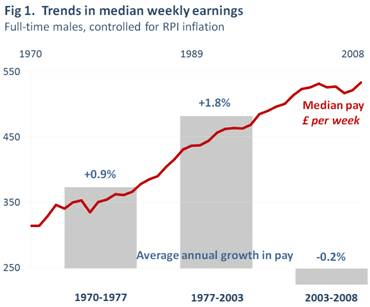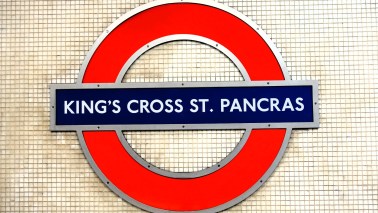GDP growth figures have become the barometer of choice for commentators trying to tell the political weather – a good measure of how the public will eventually fall in the faceoff between Osborne and Balls. The story goes that a return to sustained growth will mean a return to rising living standards. That means a vindication of the government’s position, and a victory for the Chancellor.
As a simple story, that makes sense if the pressures now facing Britain’s households are straightforwardly growth-related – if, in other words, we’re in a post-recession hangover that will vanish when growth returns.
But there’s now mounting evidence of a deeper problem for living standards in the UK economy. Take the chart below. It shows long-term trends in UK median wages. It reveals that stagnant wages didn’t start with the 2008-09 recession, but began as far back as 2003, when GDP growth was still strong.

Get Britain's best politics newsletters
Register to get The Spectator's insight and opinion straight to your inbox. You can then read two free articles each week.
Already a subscriber? Log in







Comments
Join the debate for just £1 a month
Be part of the conversation with other Spectator readers by getting your first three months for £3.
UNLOCK ACCESS Just £1 a monthAlready a subscriber? Log in